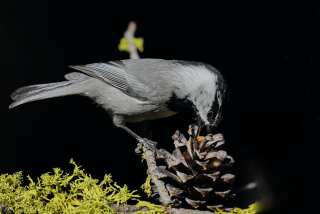The best place to nest? A little bird told me ...
- Share via
They may have bird brains, but feathered flycatchers can and do learn, even from their competitors, according to research released Thursday.
Every spring, pied and collared flycatchers arrive in the forests of Europe, looking for a good place to lay their eggs. Not knowing the territory well, they often look to resident birds for the best places to breed.
“When in Rome, do as the Romans do,” said study author Janne-Tuomas Seppanen of the University of Jyvaskyla in Finland.
In the study, published online in the journal Current Biology, researchers started by surveying four distant sites where chickadees were nesting.
At two sites, scientists affixed triangle frames on the entrances to the chickadee nests. At the other sites, they affixed circles. Around the chickadees were empty nests that were assigned triangle or circle entrances.
Researchers found that the first flycatchers to arrive showed no preference for triangle or circle nests, regardless of which symbol adorned the chickadee nests. But near the end of the migration, 75% of the arriving birds chose nest boxes with the same symbol as the chickadees’ in their areas.
Seppanen surmised that the late arrivals were younger and inexperienced. In a hurry to breed, they had to choose nest boxes without knowing where the best food sources were or where predators were likely to be found, researchers said. The flycatchers’ solution was to follow the chickadees’ lead, Seppanen said.
Previous studies have shown that some North American birds also rely on chickadees when choosing nest sites.
“It is likely that information use commonly occurs not only within species but between them,” Seppanen said.
More to Read
Sign up for Essential California
The most important California stories and recommendations in your inbox every morning.
You may occasionally receive promotional content from the Los Angeles Times.











